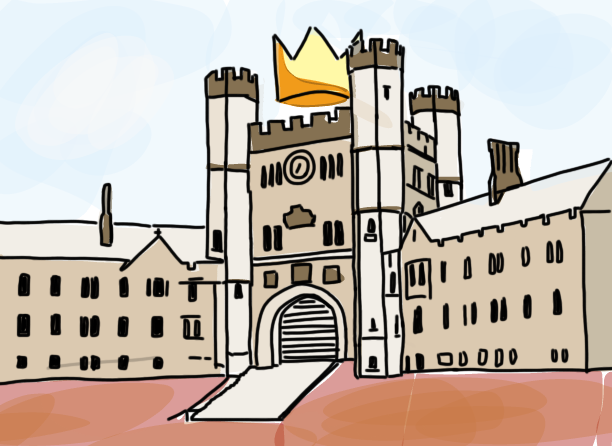Considering that many live in the city of trees and PhDs, it should come as no surprise that Claremont knows a thing or two about going green. Our person-to-car ratio is nothing to scoff at, our bike-to-car ratio is arguably better, and around half of our city’s energy has been renewable since early 2019. Three years later, in early 2022, the City Council voted to fill that 50% gap and default its power selection to the Clean Power Alliance, which purchases renewable energy from more than thirty cities. And since late 2022, the Council has confirmed that only renewable sources will power citizens’ homes and businesses. While Claremont is on the right track, the state at large has seen tumult around attaining the same level of success.
As California struggles to fulfill a statewide goal of having carbon-free electricity by 2045, they seem to have executed a plan to counterintuitively reduce green energy access. That plan came to fruition in November of this year, when the California Public Utilities Commission officially reduced, not increased, monetary incentives for excess solar energy that wide-scale users of solar panels produce and sell. Under their new regulations passed this November, any business facilities operating with multiple solar panel meters on one site will get paid around 80% less for every unit of energy sold back to a utility company, leaving business owners and homeowners at a loss.
It might seem like a sudden blow to businesses, but this recent policy action actually focuses on rebalancing the scales. In December of 2022, the Commission passed another solar panel policy as a revision of a former rule known as Net Energy Metering, or NEM. Called NEM 3.0, the policy reduced the amount that customers of utility companies would make by selling their excess energy back to said companies; specifically, the rate was cut from $0.30 to $0.08 per kilowatt-hour returned to the company. It officially initiated in April and, over the months between NEM 3.0 and this most recent decision, it became apparent that homeowners were suffering from lowered incentives while richer businesses made much higher solar profits and just got richer. Now, the Commission has righted this disparity by lowering business incentives equally.
In a sense, California is right back where it started by cutting everyone’s selling power three-quarters of the way—but for some solar advocates, this is more or less a step back from square one. The decisions have even merited the Commission a lawsuit from the Protect Our Communities Foundation who feared that the policy action would “devastate solar adoption rates, especially for working-class Californians.” In their eyes, keeping consumers and businessmen on the same level is not enough because the level of compensation they get through energy is simply too low.
At the same time, the passage of both NEM 3.0 and the recent business-oriented cut give hope that future policies in renewables will only go so far. A solar tax of $60 a month charged to utility bills of solar panel users was supposed to be included in both policies but neither one actually included said fees, lending good reason to think that such extraneous fees could be off the table from now on. It is also important to recognize that even under these more regressive monetary policies, California generally gives greater cost savings in energy than any other state, so the state continues to hold the advantage in terms of green development.
The final answer as to how positive this decision is comes down to if companies will see more benefit from having to pay people less for energy those people sell back to the grid or more harm from less people wanting to adopt their solar panels, and only time will tell if that rings more true or false.
But one thing is for certain: positive action towards going carbon-neutral is absolutely necessary, not just outside this green city but within it too. If the strive towards alternative energy is to be worth it, it is the responsibility of each and every family to adopt more direct renewable energy instead of relying on Claremont and the Clean Energy Alliance. Joshua Bonner, a senior at Claremont High, has already undertaken that responsibility for himself.
“My family has purchased solar panels. I’m obviously not the one paying for electricity, but I know my parents are happy with the new price they pay as opposed to previous years,” said Bonner. “I would say it is more than fair, given that solar is eco-friendly and we still get to use the electricity and energy we need.”
California can achieve carbon neutrality by 2045, but its citizens need to support the push despite lowering incentives for adopting and selling solar energy. The sun might rise again and bring a new period of solar policy where anyone can sell energy at $0.30 a kilowatt-hour, but Californians will just have to wait until those first few rays of hope arrive.
Sun Sets On High-Set Prices For Solar Energy In California
440 Views
Donate to The Wolfpacket
$85
$500
Contributed
Our Goal
Hello there! Our goal is to provide relavent, engaging journalism for readers of all ages. Your donation will support the student journalists of the Wolfpacket at Claremont High School, and will allow us to purchase equipment, print our monthly issues, and enter in journalism competitions. We appreciate your consideration!
More to Discover
About the Contributor

Pablo Guevara, Co-Head News Editor
Ever since Pablo joined the Wolfpacket two years ago, he’s had something to say about politics. He started running Policy With Pablo (the Wolfpacket’s only column, focused on California laws) as a sophomore, edited and approved political hot takes in the Wolfpacket’s Opinion section as a junior, and is poised to deliver the truth on politics as a senior and Head Editor for the Wolfpacket’s News Section. Outside of class, he’s either working for a local politician, role-playing a US legislator as a captain on the school Debate team, or making political content on Instagram; you can’t deny that he’s always zeroed in on politics. His senior parking lot in the CHS parking lot is literally based on the US Constitution—you can’t make this stuff up. But at the same time, he thinks politics should be a fun and accessible topic for anyone, not just himself! If he can get at least one newcomer on the Wolfpacket staff to debate, discuss, and enjoy politics as much as he does, that’s a win in his book.



















